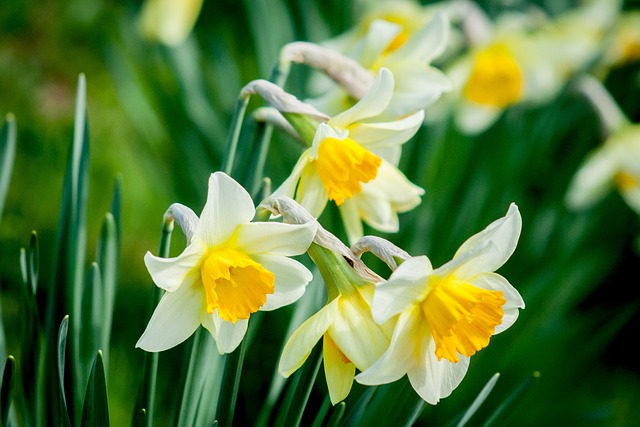Bell flowers are a beautiful and unique species of flowering plants, scientifically known as Campanula. They are known for their bell-shaped flowers that come in various colors including blue, white, pink, and purple. These flowers bloom in late spring to early summer and are a favourite among gardeners and flower enthusiasts alike.
Bell flowers belong to the family Campanulaceae
Bell flowers belong to the family Campanulaceae and are native to Asia, Europe, and North America. They are hardy perennials, meaning they can grow year after year without having to be replanted, making them a low-maintenance choice for gardeners. They are also great for naturalising, which means they can spread and create a beautiful sea of flowers in your garden.
There are many different species of bell flowers, ranging in size from short, compact plants to tall, slender specimens. Some of the most popular species include the Canterbury Bells, the Serbian Bell flower, and the Adriatic Bell flower. All of these species have a similar growth habit, with upright stems that produce clusters of flowers at the top.
Notable features of bell flowers
One of the most notable features of bell flowers is their beautiful bell-shaped flowers. These flowers come in a variety of colors, including blue, purple, pink, and white, and can range in size from small, delicate flowers to large, showy blooms. The flowers are typically arranged in clusters on the tips of the stems and can be either single or double blooms.
In addition to their beautiful flowers, bell flowers also have attractive foliage that adds to their overall appeal. The leaves are typically oval-shaped and can be either green or blue-green in color. They are arranged alternately on the stem and can grow up to 6 inches in length.
Bell flowers are easy to grow and care for,
Bell flowers are easy to grow and care for, making them a great choice for beginner gardeners. They prefer well-drained soil that is rich in organic matter, and they prefer full sun to partial shade. In terms of watering, bell flowers prefer to be kept moist, but not soaking wet. Over-watering can cause the roots to rot, so it is important to allow the soil to dry out slightly between waterings.
Bell flower when planting
When planting bell flowers, it is important to choose a location that provides the right amount of sun and shade. They do best in full sun to partial shade, but too much shade can cause the stems to become leggy and the flowers to be less abundant. When planting, be sure to space the plants about 12 to 18 inches apart to allow for adequate air circulation.
Recommendation: Tulip Farm: A Guide to Understanding & Appreciating Tulips
Bell flowers are also very versatile in terms of their use in the garden. They can be grown in beds, borders, rock gardens, or as cut flowers. They are also great for attracting pollinators such as bees and butterflies to your garden, making them an eco-friendly choice.
Manitenance
In terms of maintenance, bell flowers are very low maintenance and require little care after they have been established. They can be deadheaded, or have spent flowers removed, to encourage re-blooming, but this is not necessary. They can also be cut back after flowering to promote a bushier growth habit, but this is optional.
Overall, bell flowers are a beautiful and unique species of flowering plants that are perfect for any garden. With their stunning bell-shaped flowers, attractive foliage, and easy care requirements, they are a great choice for both beginner and experienced gardeners alike. Whether you are looking to add color to your garden or simply want to enjoy the beauty of nature, bell flowers are the perfect

